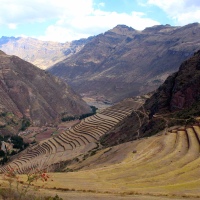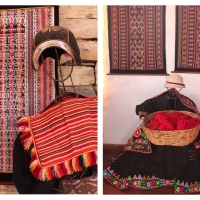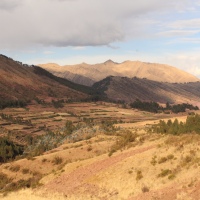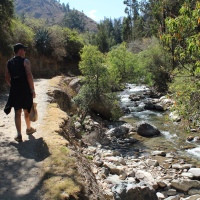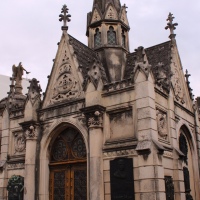This one is for the beer lovers.
Turns out Patagonia is the home of craft beer in Argentina. The cause is El Bolsón, which is similar to Nelson, NZ, in that they grow mighty fine hops near a town filled with hippies. When we planned our trip to Bariloche I had hoped to discover tasty local brews and I wasn’t let down. In fact, I was amazed at the number of micro breweries up to their eyeballs in amber goodness.
This is a two part post dedicated to the beers we uncovered in Bariloche and El Bolsón, which can be found in Argentina’s Lakes District, Northern Patagonia. Thing is, not only do these towns host great brews in an amazing setting, they have great pubs and restaurants too. So, these posts will cover both the beers we tried and where we drank them. The sole criterion for venue selection was whether local craft beer was served on tap.
Like a Kid in a Toy Store
So how many craft breweries are there in Bariloche? Well, after talking to locals and the ladies down at the tourism office we established that there are at least eleven. At least. The issue is no-one really knows, hence this post. But I can share the following:
- Bachmann*
- Berlina**
- Blest
- Colonia Suiza
- Gilbert*
- Konna*
- Lowther
- La Cruz*
- Manush*
- Tres Monks
- Windmill
Those I marked with a * are covered in this post. The brewery marked with a ** I tried in a bottle and is not covered here in detail. The rest we didn’t get to, reason being that the ones we did try can be found within three blocks of the city centre (we stayed at Hostel 41 Below). The rest require a bit of time on the outskirts of town, which alas we did not have, so please feel free to share your experience if you get there and I will duly update this post (or link to your review).
Konna Bar
Rightio. Konna Bar was first on the list and can be found on Juramento 73. It is a cozy, easy going pub with good beats. It seems to be poplular with the locals, always a good sign. Konna is a dedicated bar serving its name sake, Konna Beer, and we highly recommend a visit.

Clockwise: pub entrance: the Kolsch beer label; Kolsch half pint.
Konna make an India Pale Ale (I.P.A.), Kölsch and a Porter, all of which you can buy on tap. We tried the Kölsch. Its a delicious, cloudy beer with a slightly sweet, lingering aftertaste. I sampled the other two and, while good, personally preferred the Kölsch.
Los Vikingos Pub
Ahh yes, The Viking Pub. As you would expect, it has a bit of mongrel in it. But, paradoxically, it has quality beer on tap. Figure that out. Can be found about 15 metres from Konna Bar, corner Juramento and 20 de Febrero.

Clockwise: pub entrance; toilet door; beer brands on tap.
La Cruz
First up was La Cruz, a local favourite, although this may change. We heard that it had been sold to Quilmes, Argentina’s mainstream brewery, and as with Little Creatures in Fremantle, there are fears that the quality will slide.
Only two beers were on tap at the pub, but La Cruz produce seven types: English Pale Ale, I.P.A., Brown Ale, Working Man Porter, Barley Wine, Scotch Roble and an I.P.A. Double Hop. The Pale Ale was the choice of the day, as recommended by the barman (who didn’t look like a viking). The beer was sharp and tart with a light amber colouring. Despite the tartness we found that it was still smooth and refreshing. Recommended.
Bachmann
Having tried a Pale Ale we went with a Red Ale, or Roja, from Bachmann. This was fairly rich in flavour, with a delicious, slightly smokey taste. The ale is dark amber in colour, which goes with the flavour. Enjoyed.
If you scout around you will also find a Bachmann Stout, Fruit Beer (probably rasperry) and a Pale Ale.
As we were sipping the suds a fella approached us at the bar. He was an Argentine from Missiones (think Iguazu Falls) and he was hoping to fund his beer through magic tricks. His first attempt went well, somehow managed to undo a knotted piece of rope with his tongue. His next trick not so much; the old pull a ring through string trick ‘came undone’ when Saskia pulled the ring too hard and revealed the gap in the steel. The look on the magicians face was priceless. Good times.
Note that both La Cruz and Bachmann have their own pubs in town. Bachmann is a few blocks east however La Cruz is several suburbs west. You can get to La Cruz by bus but still need to walk a few blocks. Ask at the Tourism Office for directions to both.
Manush Cervecería and Gastropub
Recommended by Leo, our hostel host, Manush is the cool kid on the block. Sitting on the corner of Morales and A.M. Elflein, Manush provides seven brews on tap: Milk Stout, Stout, Irish Cream Ale, Honey Beer, I.P.A, Kölsch and a Pale Ale. The beers are brewed 15 blocks away by the bartender’s brother. So, it is local.
We really liked Manush. It has an upbeat atmosphere and a slick interior design. Think of a modern log cabin. The menu is exceptional and you can order a sample of all seven beers, which we recommend. Dan, our comrade in arms and food fiend, ordered the tiramisu with milk stout and the chocolate brownie and cheesecake with Patagonian ice cream (the famous El Bólson Jauja, no less). We can confirm that they were delicious!
Although we tried all the beers, we did order a half pint of the Irish Cream Ale. Not surprisingly it was very creamy, with a slight sting of ale. Tasty.
Gilbert Restaurant
Located on A.M. Elflein, just along from Manush, the Gilbert Restaurant offers three brews from the Gilbert brewery: Pale Ale, Red Ale and a Stout (or Rubia, Roja y Negro). We weren’t too excited by the beer or the restaurant.

Note that the two for one deal is per person. You can’t share between two people.
We went with the Pale Ale. It has a strong flavour to it, honey coloured with a slightly bitter finish. Probably the least favoured of the brews we sampled, but of course this is subjective. The restaurant offers the usual Argentine fair, could do more to distinguish itself. Swing by for the happy hour and then move on.
Honourable Mentions
There are two other pubs nearby that are worth a look in, even though the beer is not local. Antares and Warsteiner both have national coverage and are a good mainstream alternative to Quilmes. Their dedicated restaurants in Bariloche are pretty good, but note that only Antares offers a range of craft beers (all of which are made by Antares). Both venues are within a stones throw of Manush.
Antares Restaurant
One of a chain of upmarket hang outs, the Antares Restaurant is polished with a lively atmosphere and good food. They provide a standard set of seven craft beers as well as up to two one-off brews. When we visited the special brews were an I.P.A. (a collaboration with Odell Brewing Co., Colorado) and a Belgian Strong Ale.
At 7.0% the I.P.A. is stronger than your average beer. Surprisingly the flavour is more similar to a pale ale, with a sweet aftertaste. I (Mark) enjoyed it, and I am not a fan of I.P.A.s. The Belgian was also good, light, sweet and very tasty. In fact, about what you would expect from a Belgian beer. Get into both of them if you are in town.
Warsteiner Restaurant
Proof of Argentina’s German migrants, Warsteiner provides a tasty mainstay that is easy to drink a lot of. Think of a German lager and you’d be close. The restaurant is a very deutsch brewhouse with a touch of ski lodge. Unfortunately we didn’t look at the menu so cannot comment on that (we did enjoy the beer though).

Dan jumped behind the bar to take this. Cheeky.
And thus ends our coverage of Bariloche. My thanks to Dan and Saskia for the photographs and for indulging in my crazy ideas.

Bariloche is spoilt with stunning scenery.
































































